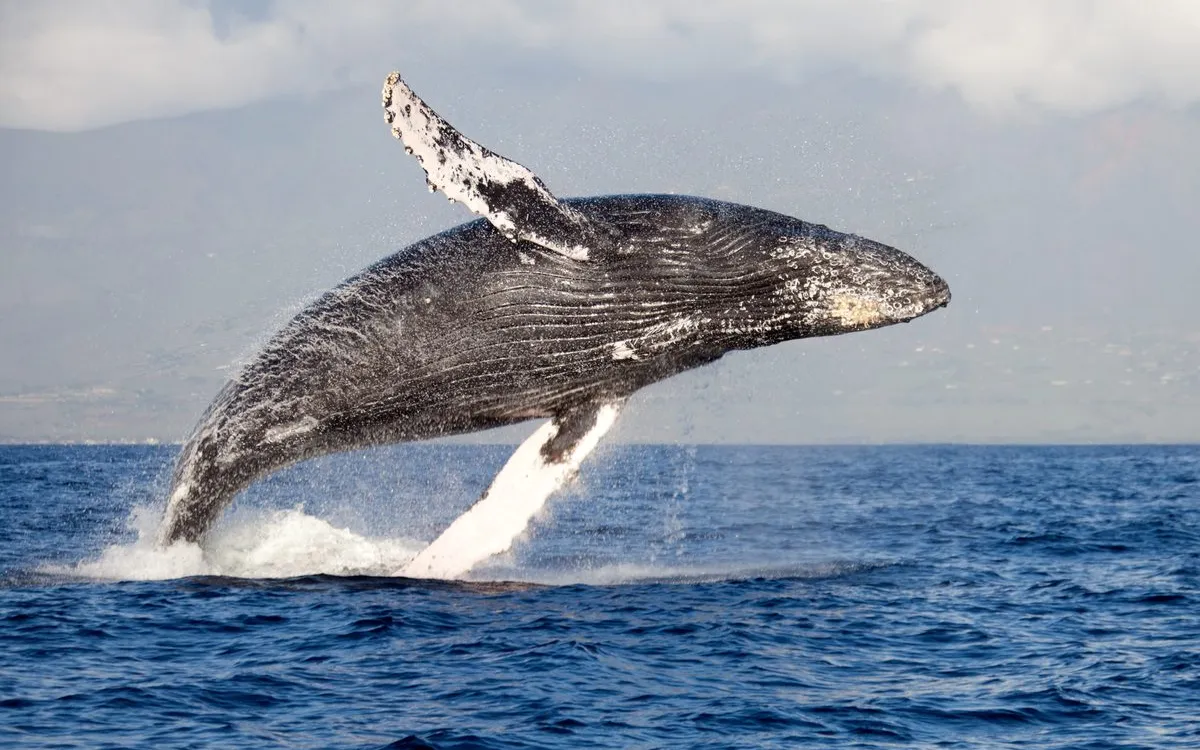
Humpback whales have long captivated researchers and enthusiasts alike due to their remarkable intelligence and complex behaviors. Among the most fascinating of these behaviors is their unique hunting strategy, where they collaborate to blow bubbles and form a ring around schools of small fish. This technique, known as bubble-net feeding, allows humpback whales to efficiently corral fish, making it easier for them to feed. The social dynamics and communication involved in this collaborative hunting method have sparked intriguing discussions about the whales’ communication skills.
A recent study by scientists from the SETI Institute has shed new light on the communication methods of humpback whales. In 2021, the team conducted a pioneering experiment where they engaged in what they termed a 'conversation' with a humpback whale named Twain. By playing recorded whale calls through an underwater speaker, they observed Twain responding with similar vocalizations, indicating a level of interaction that was previously unrecorded.
In a follow-up study published in 2024, researchers analyzed whale calls made during bubble feeding events. Initially thought to be random or merely social in nature, these calls were found to have more specific functions. Certain vocalizations appeared to serve as instructions or targeted comments aimed at coordinating group behavior during feeding activities. However, these earlier studies did not explore how humpback whales engage with humans voluntarily, nor did they investigate their bubble-blowing behavior beyond its role in hunting.
A new study published in Marine Mammal Science by the SETI Institute and the University of California has expanded on previous research by documenting instances where humpback whales produced large bubble rings during friendly encounters with humans. These behaviors suggest that the whales may be attempting to communicate or send messages, further piquing the interest of scientists.
The overarching goal of the SETI Institute is to explore the origins and prevalence of life and intelligence throughout the universe. As such, these whale-human interactions are not only fascinating but also contribute to our understanding of communication among non-human species on Earth. This research holds implications for how we might approach contact with potential sentient beings in the future, should we encounter them through space exploration.
Dr. Fred Sharpe, co-lead author of the study, emphasizes the complexity of humpback whale societies. “Humpback whales live in complex societies, are acoustically diverse, use bubble tools, and even assist other species being harassed by predators,” he notes. The research findings suggest that the whales are not only capable of blowing bubble rings but may do so in an attempt to playfully interact with humans. Furthermore, these actions could serve a dual purpose: to observe our responses and to engage in some form of communication.
The researchers likened the whales’ bubble-ring blowing to a 'candidate signal,' a term used to describe intriguing radio waves detected from space, which require further analysis to understand their origins. As the team works to decode these potential whale communications, they aim to apply similar techniques to interpret signals from extraterrestrial life.
In their study, the researchers analyzed twelve episodes of bubble ring production, resulting in 39 rings created by eleven individual whales. “We’ve now located a dozen whales from populations around the world, most of which have voluntarily approached boats and swimmers while blowing bubble rings during these curious behaviors,” said Jodi Frediani, a marine wildlife photographer and co-lead author of the study.
The Whale-SETI team is dedicated to utilizing their findings to develop filters that can help identify cosmic signals indicative of extraterrestrial life. They hope that with continued observation and advanced AI technology, they will be able to accurately interpret the communications of whales and other animals. The insights gained could pave the way for understanding potential communications coming from beyond our planet.
In conclusion, the study of humpback whales not only enhances our knowledge of marine life but also opens the door to broader implications for understanding communication across the universe. As researchers continue to explore these magnificent creatures, the mysteries of their social interactions and communication methods promise to reveal even more fascinating insights.
For a deeper understanding, listen to the sounds of bubble-making whale packs and immerse yourself in the captivating world of humpback whales.